中国组织工程研究 ›› 2013, Vol. 17 ›› Issue (20): 3679-3686.doi: 10.3969/j.issn.2095-4344.2013.20.010
• 口腔组织构建 oral tissue construction • 上一篇 下一篇
高度吸收的上颌窦区种植体生物力学分析
何 毅1,姜培林1,耿建平1,王 英2,周剑秋2,徐 卫3
- 1南京工业大学自动化与电气工程学院,江苏省南京市 210009
2 机械与动力工程学院,江苏省南京市 210009
3 英国萨理大学工学院,吉尔福德郡 GU2 7XH
Biomechanical analysis of the implants in highly absorbed maxillary sinus district
He Yi1, Jiang Pei-lin1, Geng Jian-ping1, Wang Ying2, Zhou Jian-qiu2, Xu Wei3
- 1 College of Automation and Electrical Engineering, Nanjing University of Technology, Nanjing 210009, Jiangsu Province, China
2 College of Mechanical Engineering, Nanjing University of Technology, Nanjing 210009, Jiangsu Province, China
3 The University of Surrey, Guildford, Surrey GU2 7XH, UK
摘要:
背景:目前有限元法广泛应用于骨科生物力学分析,评价指标主要包括Max von Mises 应力和应力的传递和分布概况。但由于体内的复杂生物力学环境和个体化差异明显,很难由具体的案例得出解决临床相关的方法。 目的:分析高度吸收上颌窦区种植体的生物力学分布状况。 方法:应用Simplant建立了一个位于上颌第二磨牙位置的5.5 mm×11.0 mm植入体模型;Abaqus有限元软件分别分析了在正咬合和反咬合关系条件下,在0°,30°,45°,60°,90°负载300 N的同等加载下,其上颌窦区域的应力分布情况,并作了比较。 结果与结论:在反咬合关系下,上颌骨内的应力集中均匀分布在牙植体颈部与皮质骨的交界处,在0°,30°,45°,60°,90°负载300 N的同等加载下,Max von Mises分别是23.43,52.97,61.18,66.15,70.53 MPa。在正咬合关系下,上颌骨内的应力集中不仅分布在牙植体颈部与皮质骨的交界处,而且出现了第二应力集中区,Max von Mises分别是38.64,71.22,71.62,77.65,73.21 MPa,较反咬合平均高出50%左右。实验有限元分析结果表明,高度吸收上颌窦区采用反咬合设计方法更好。
中图分类号:
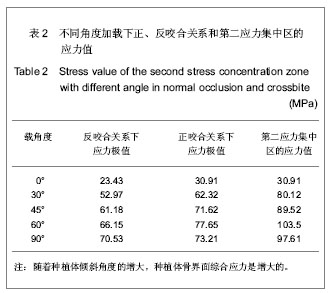
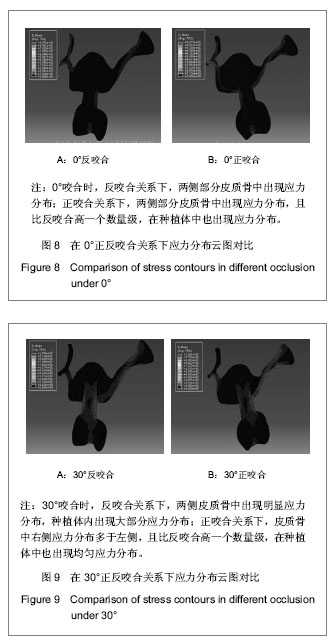
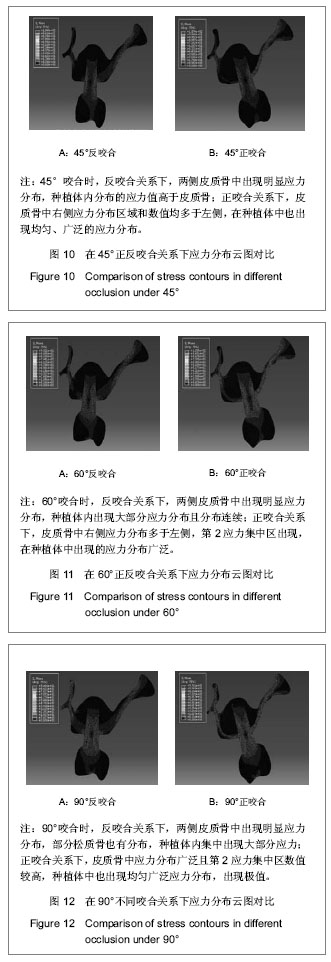
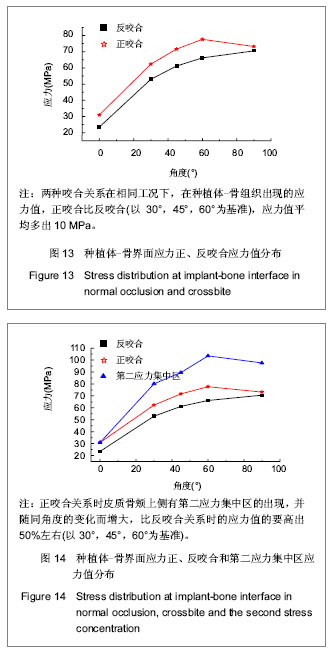
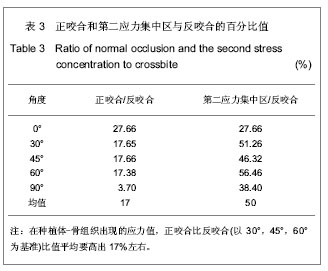
.jpg)
.jpg)
.jpg)
.jpg)
.jpg)
.jpg)
.jpg)